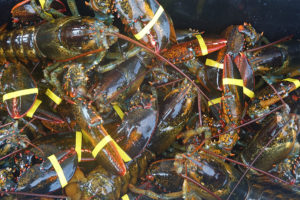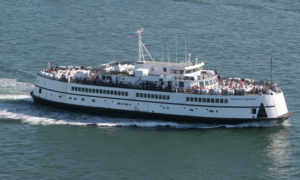 A trip to Cape Cod includes a to-do list of must see sights, must do activities, and must eat foods. Things to get out of the way before you head back home. And for the locals, a similar list exists in the back of our minds to ensure that we don’t work the summer away without enjoying the special things about Cape Cod.
A trip to Cape Cod includes a to-do list of must see sights, must do activities, and must eat foods. Things to get out of the way before you head back home. And for the locals, a similar list exists in the back of our minds to ensure that we don’t work the summer away without enjoying the special things about Cape Cod.
The sights are pretty easy: there’s the ocean, maybe a lighthouse, Pilgrim Monument perhaps. For activities there’s the beach, a whale watch, and mini-golf of course. Then there’s food, and I dare you to fight me on this, it’s clam chowder, ice cream, and lobster.
Chowder, ice cream, and lobster.
Clam chowder is obvious, a thick soupish concoction made up numerous delicious things both local (clams) and more familiar (potatoes). Even if you try chowder and aren’t nuts about it, that’s OK. It is generally a mere prelude to the meal itself, an appetizer of sorts, just put it aside and move on. No harm, no foul. How could you lose?
That was a trick question, you can’t lose. Chowder is wonderful, discussion over.
Next, we have ice cream. In a world where few things are perfect and there are a great many subjects on which to disagree, it is nice that there is a substance like ice cream. Loved by the very young and the aged, across all boundaries, ice cream suits most all who are tolerant of the lactose.
Flavors abound to please even the most discriminating of palates, the perfect summer dessert. And here on Cape we have some of the finest ice cream emporiums around: Four Seas, Cape Cod Creamery, Sundae School, Smitty’s, The Ice Cream Smuggler… I could go on.
But then there’s Lobster. Polarizing, divisive, to some it’s a delicacy, while to others it’s a giant bug that can breathe underwater and crush an enemy with a single clench if its massive, imposing claw.
Those suspicious of lobster have some understandable concerns. To begin, at many seafood establishments the lobsters are there, in plain view, in a tank when you enter.
Why? Who among us would ever go to a burger joint that kept a pen of cattle adjacent to the dining room. Many think it an odd sensation to eat a creature whist their brethren can stare at you from across the room, casting judgement.
Many would argue that the purchase of a live lobster assures the freshness of the meal. One might ask these same people if they would procure live poultry for the same reason?
Lobster is hardly a relaxing or dignified cuisine either. There are hard shells to bash, and primitive tools with which to separate any edible parts from the thick exoskeleton. There is loads of lobster juice and nasty innards which fly about and require the consumer to wear a highly degrading bib to shield themselves from the shrapnel.
And one must pay quite a cost for the privilege of such a debasing experience too. Prices vary, but a consumer can expect to pay about $55 per pound of lobster meat. To compare, a decent steak runs about $11 per pound, salmon about $13.
Lobster hasn’t always been held in such high esteem either.
In fact, when European settlers first came over to this fine continent, lobsters were so plentiful that they would pile up along the coast. Our forefathers – seeing no need for a human to consume such a labor intensive, unseemly water bug – chose instead to use the crustaceans as fertilizer for their crops and as bait in pursuit of more respectable seafood. They were widely referred to as “cockroaches of the sea.”
The overabundance led them to become something of a poor-man’s meal. Allowing the disadvantaged population a source of protein outside of the finer and more costly beef, fish, or poultry. In fact, the very lobster meat that we are now paying through the nose for was once used to feed the region’s slave and prison population. It was the equivalent to today’s spoiling produce or day-old baked goods.
A little shy of a century and a half ago things started to change. With a transcontinental railway system becoming more affordable, the East Coast – and Cape Cod – were beginning to see the start of what would become their lifeblood, tourists.
With the influx of consumers oblivious to the lobster’s overabundance, it became a treat, a delicacy not available at home in Ohio, or Illinois, or Oklahoma. And they ate it up – pun absolutely intended.
By the 1880’s restaurants and markets were able to mark up the prices. So by World War II, lobster was considered a delicacy and, as a result, what was once a poor man’s food became only affordable for the upper crust.
As a result of the newfound appreciation for lobster, fishermen did what fishermen do, they caught a whole ton of them. In an ironic turn this made the once overabundant cockroach of the sea rarer and rarer and thus more and more valuable.
For the last two decades lobster catches in the region have been in steep decline which means prices are likely to continue to climb, which in turn means that in the coming years this complicated cuisine, once suitable only for fertilizer and convicts will likely become even more a staple of the upper class.
Well, at least we’ll always have ice cream.
By CapeCod.com Staff
























